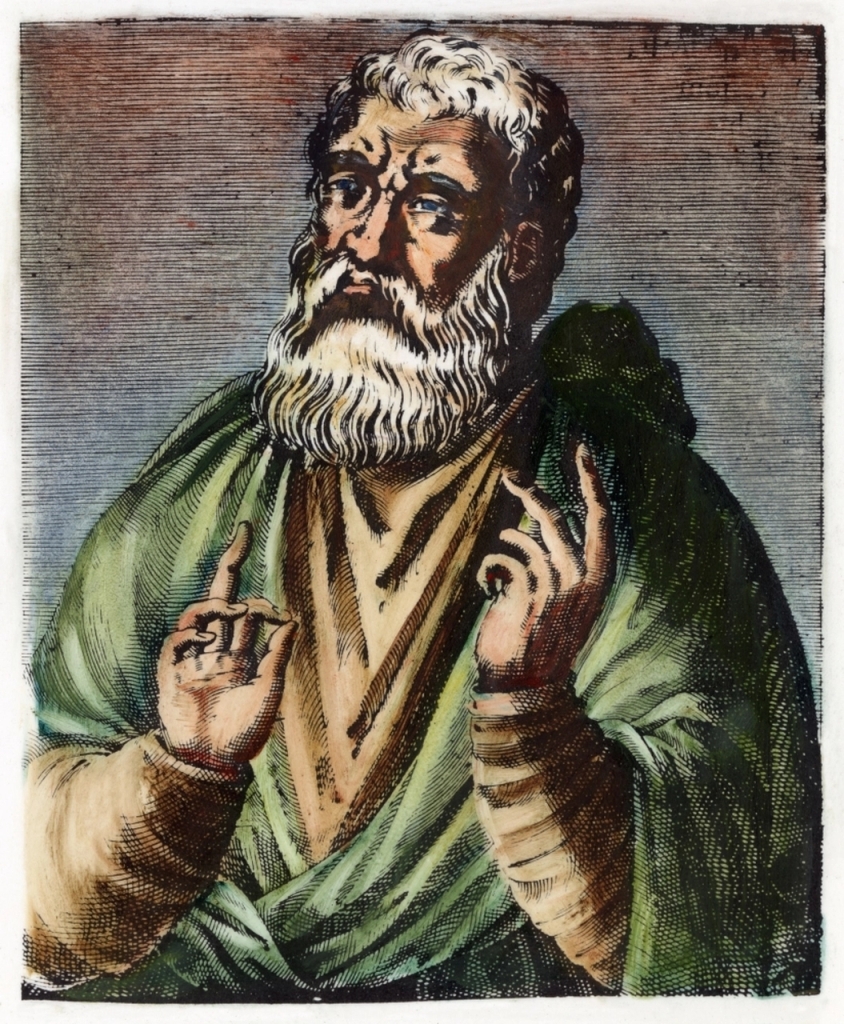Please Help Me, I’m Falling
But not like that, although it is a classic song. I’m returning, after a considerable break to the topic of the Fall of Man. I still don’t have what I consider a definitive answer, and may never have one. I do want to do some more thinking about it and the related issues, though; so, once more into the breach.
First, I want to draw attention to my summation of where I stood when I took a break from the series almost a year ago: here and here I discussed what I thought needed to be the basis for further discussion. I want to take a few things from the latter post and add to them some notes that I think will be necessary as we proceed.
First, I note that the following are not postulates properly so-called, but starting points (check out the last post for a detailed discussion of this). With that in mind, let’s see where we need to start.
1. The evils in the physical universe are not caused by the Fall of Man,
2. which could not have occurred as a discrete act by a specific person or persons.
Number 1 is irrefutable by any reasonable definition of “evil”, which very obviously predates the existence of Homo sapiens, hominins, hominids, and for that matter primates and mammals. Unless we posit backward causality (which is a whole other can of worms), the blame is not mankind’s. I’ve had it suggested that before sapient creatures–humans–came on the scene, no amount of plague, disease, natural disasters, etc., were actually “evil”. In my mind, that doesn’t wash; but in any case, I’ve addressed this idea here, here, and here. I’ll leave it at that and simply state that Number 1 is self-evident.
3. Humans–by which I mean Homo sapiens–while having an ultimate common origin (some earlier hominin that probably came out of Africa), evolved in the proximate sense in different places and at different times. In short, we assume some form of hard polygenesis.
To unpack: The ultimate primate ancestors of humans almost certainly evolved in Africa. The last common ancestor we share with the great apes–chimps, bonobos, and gorillas (orangutans are more distant)–was about six million years ago, according to the most recent interpretations of molecular biology. Our last precursor before the genus Homo was probably some species of the genus Australopithecus. Depending on whom you believe, there were up to fifteen species of Homo. How many of these should indeed be considered separate, and the exact nature of the their interrelationships are, to say the least, unclear. As far as I know, it’s not even been definitively settled as to whether Neanderthal Man should be considered a separate species (H. neanderthalensis) or a subspecies (H. sapiens neanderthalensis). Other hominins, such as the Denisovans, have yet to be officially classified at all.
In any case, there is no real agreement as to what happens after Australopithecus. The genus Homo obviously came into existence–here we are!–but beyond that it’s very muddy. Monogenetic theories would have it that one strain of hominins–probably Homo erectus–evolved into anatomically modern humans–H. sapiens–in Africa, and that this early population of modern humans left Africa and spread out over the world (hence this is sometimes called the “out of Africa” hypothesis). From this perspective, Neanderthalers, Denisovans, and others were offshoots that had little or no effect on the evolution of modern humans.
Polygenetic theories would have it that several different species and subspecies of Homo developed, both in Africa and elsewhere, early hominins having dispersed out of Africa at an early date. Different populations in different areas gradually converged towards what we call H. sapiens. Thus, modern man did not arise in any one location, but came into being in originally separate population groups, some in Africa, others in Europe, still others in Asia. Later on, these various populations interbred; but they originated separately. Humans still ultimately came “out of Africa”, but at a point before the species H. sapiens existed.
A third possibility is some combination of the above. It is possible that some lineage developed in Africa which became the main human lineage, while other, smaller lineages–Neanderthal, Denisovan, etc.–developed elsewhere. Over time, these separate lineages interbred, with the main, African-descended H. sapiens absorbing the other lineages, thereby taking on some of their characteristics while maintaining the majority of traits of the original African H. sapiens lineage.
I’m inclined towards something along the lines of the third possibility. However, at this point things are still murky. Also, for purposes of future posts on the Fall, I’d like to assume full-bore polygenesis. My basic operating theory throughout this whole endeavor has been to assume the worst-case scenario, that is, the scenario most difficult to reconcile with traditional theology. That way, if the worst-case scenario indeed turns out to be the case, I’m not left with a God-of-the-gaps argument that fails miserably, but a robust one that can integrate the scientific consensus. On the other hand, if the worst case is disproved, so much the better; we can then look for an easier solution.
Having unpacked Number 3, I also want to point out that Number 2 follows logically from it (though in reverse order!). Polygenesis makes the concept of Original Sin caused by a single human couple and then spreading like a genetic defect throughout the population of their descendants untenable. Some have tried to get around this by postulating that only one primal couple and their direct descendants were ensouled. Thus, Neanderthalers, Denisovans, and others, though seemingly human, lacked souls and if they interbred with ensouled humans, they contributed only their genes, while Original Sin passed from the ensouled humans–the children of Adam and Eve–through the hybrid offspring. Any pure-blood Neanderthalers or others were mere animals who perished utterly. Suffice it to say that I find this hypothesis highly problematic for reasons I’ve already discussed.
4. The main focus for any Christian theology that wants to integrate the above has to be on the Atonement.
I’ve written a bit about the Atonement already, and will be writing more. This, indeed, has to be the main focus. Without the Atonement, no religion that is recognizably Christian, as that term has been historically understood, is possible. You could have something, e.g. Unitarianism, that reveres Jesus of Nazareth and that uses certain Christian terms; but it would not be Christian.
This is because the core narrative of Christianity properly so-called is as follows: The human race is hopelessly “in sin and error pining”, unable to rectify its sorry state. Then Jesus of Nazareth, called the Christ, dies on the cross, and by so doing “tramples down death by death” and makes possible the reconciliation of man to God. The way out of this “vale of tears” is thus made possible by the action of Christ. The thing is that in the traditional accounts the reason that we are “in sin and error pining” in the first place is because of Original Sin; which is in turn attributed to the primal sin of Adam and Eve, with the first chapters of Genesis traditionally being construed literally. As we’ve discussed at considerable length, the Genesis account not only cannot be construed literally, but in light of polygenesis even the figurative meaning must be drastically re-worked.
Thus, if we attack it backwards–that is, if we can get a better handle on exactly what the Atonement means in the modern context–we will be in a better position to look at what the Fall and Original Sin might be construed to mean. With all this in mind, we are prepared to continue looking at the Fall of Mankind, beginning with the Atonement.
Part of the series Legends of the Fall.
Posted on 27/12/2013, in Christianity, humans, philosophy, primatology, religion, theology and tagged Adam and Eve, Christianity, evolution, Fall of Man, hominids, Original Sin, philosophy, polygenesis, theology. Bookmark the permalink. 2 Comments.











Pingback: Legends of the Fall: Index | The Chequer-board of Nights and Days
Pingback: Penal Substitution | The Chequer-board of Nights and Days